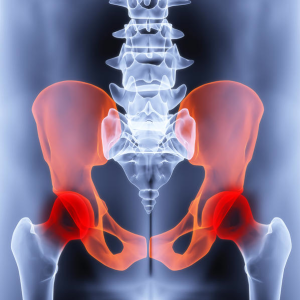The pelvis is an area that is located just below the belly button in the abdomen region. As such, it follows that pelvic pain, would be pain that affects this particular region of the body.
Pelvic pain has many facades, starting from the way it comes about, the accompanying pain and discomforts as well as the way it can be treated to the ways in which we can protect ourselves from pelvic pain.
How Many Individuals are Suffering?
Within Europe, it is estimated that up to 100 million people suffer from chronic pelvic pain. Of these people, about 27 million people suffer from severe pain that affects their day to day lives. This information was shared at the first ever EYAP, The European Year against Pain, in 2012.
In the US, between 12 to 20 percent of women suffer from chronic pelvic pain, according to the National Pain Foundation. That’s between 20 and 30 million women!
Conditions Associated with Pelvic Pain
Pelvic pain is normally accompanied with a wide range of conditions. Some of these conditions may be as harmless as the signs of fertility for instance during menses, digestive disorder such as IBS or in some cases a sign of a particular life-threatening situation.
Pelvic pain might be steady or in some cases intermittent in nature. Severe pain often has a way of getting in the mix of things and affecting your daily lifestyle. Some women have been known to only experience significant pelvic pain during their periods, while others get affected primarily during sex with their partners.
Pelvic pain tends to affect individuals in different ways. In women, pelvic pain can be a sign of many different things such as:
- Problems with the organs in your pelvic region like the uterus, ovaries and fallopian tubes as well as the cervix or vagina.
- This may include endometriosis, pelvic inflammatory disease, uterine fibroid

- tumors, mittelschmerz (painful ovulation), ovarian cysts, kidney stones, interstitial cystitis, vulvodynia.
- Ectopic Pregnancy
- Post Operative Scar Tissue (Adhesions)
- Irritable Bowel Disease
- Pelvic Organ Prolapse
- Pelvic Congestion Syndrome
- Premenstrual Syndrome and/or Menstrual Cramps
- A sign of an infection in the urinary tract, lower intestines and rectum as well as muscle or bone.
- In men, the most common reason for pelvic pain occurs as a result of problems with the prostate.
- Pelvic pain may be slight and only gets noticeable during such times when you engage in sex or urination.
Call (602) 507 – 6550 to schedule your Appointment TODAY!

How Does Pelvic Pain Get Diagnosed?
There are four main ways in which pelvic pain gets diagnosed. These methods are: performing a pelvic examination, conducting a pelvic laparoscopy and performing an ultrasound imaging or CT Scan of the pelvic region.
These procedures are often conducted by qualified medical practitioners such as gynecologists.
What Treatments Are Available for Pelvic Pain?
A particular treatment plan is prescribed depending on the cause of the pelvic pain in question. In most cases, the treatment process involves the taking of anti-inflammatory medications, possibly hormone therapy and in some cases neurological agents.
Physical therapy may be indicated as well to include pelvic floor exercises. Behavioral therapy can help individuals deal more effectively with pelvic pain and decrease the baseline discomfort experienced.
Endometriosis treatment includes nonsteroidal anti-inflammatory medications, hormonal therapy, and potentially laparoscopic surgery to remove scar tissue, growths, or adhesions while leaving reproductive organs intact.
In severe cases, patients may be required to undergo a hysterectomy. Unfortunately, about 30% of women referred to pain clinics for pelvic pain treatment have already undergone a hysterectomy.
For those individuals who do not have a surgical solution for pelvic pain relief (or it failed), medication management may help along with interventional pain treatments with Arizona pain doctors which may include:

Despite considerable workup and substantial treatment, pelvic pain may not have a surgical solution that relieves it. Therefore, nonoperative pain management may be effective with a comprehensive Arizona pain center.
These treatments have a low risk profile and potentially highly effective outcomes. If you or a loved one suffers from chronic pelvic pain, help is available.
Call (602) 507 – 6550 to schedule your Appointment TODAY!


![]()



